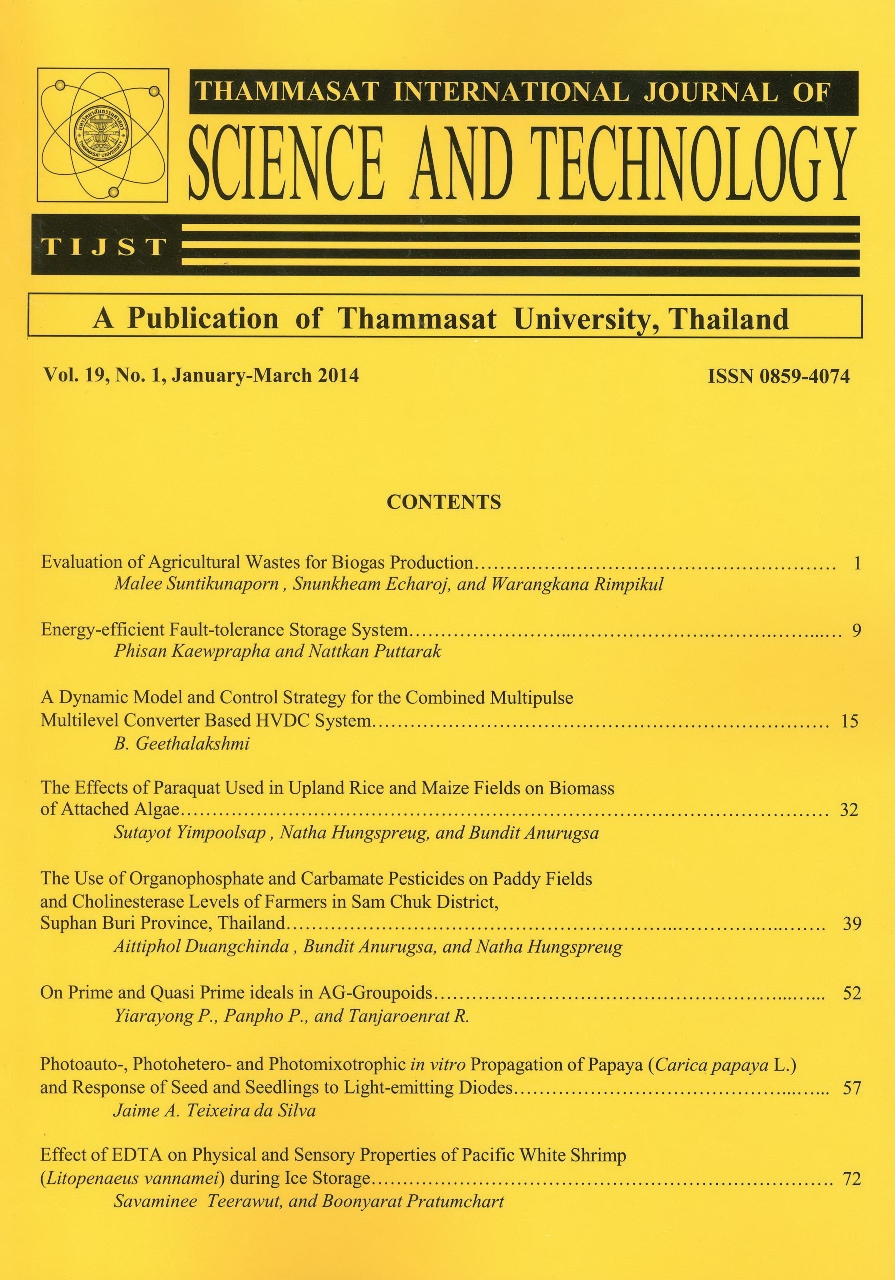Lead concentration and factors affecting its fractions in soil around a selected industrial estate
Main Article Content
Abstract
Related activities conducted in lead industries could bring about various negative impact on the environment due to the contamination emitted by the waste, which can transfer to environmental compartments due to the fate of the substance in soil. This study conducted a field survey and laboratory analysis of soil samples collected from an industrial estate zone. It was found that the maximum level of total lead was 3.11 mg/kg dry weight. Lead fractions for 5 forms were analyzed using a sequential extraction method. The results showed that the largest contribution of lead contamination was presented in bound to organic matter fraction (F4) while the smallest contribution was exchangeable fraction (F1) and bound to carbonate fraction (F2). It was found that pH tends to be an important factor on the availability of lead fractions. Additionally, it was observed that bioavailable fractions of lead tend to increase at lower level of pH. In other words, in highly acidic conditions, bioavailable fractions of lead presented the lagest fraction whereas the fractions tend to decrease in lower acidic and neutral conditions.
Keywords: Lead fraction; Sequential Extraction; Exchangeble fraction; Soil pH.


